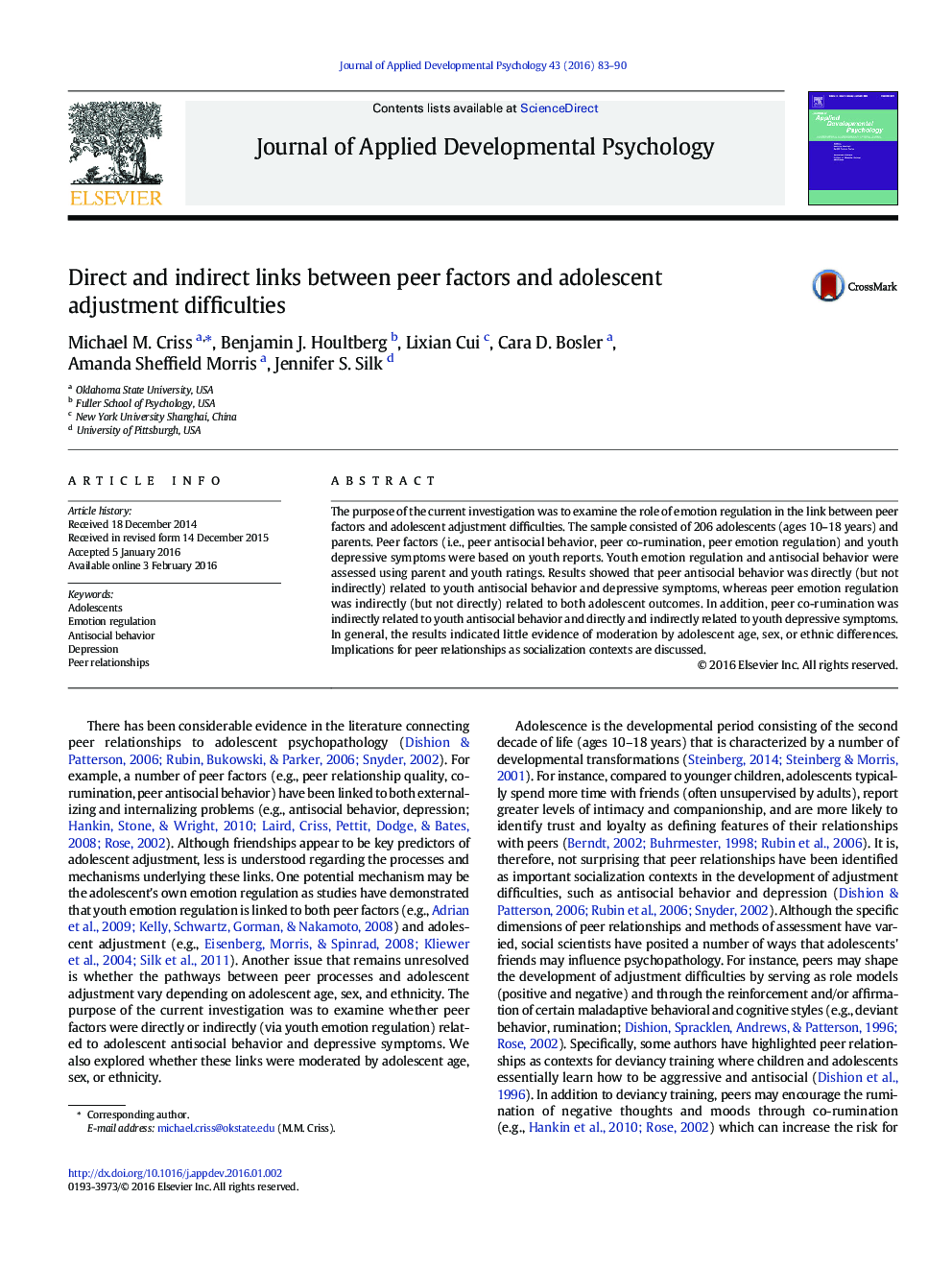| کد مقاله | کد نشریه | سال انتشار | مقاله انگلیسی | نسخه تمام متن |
|---|---|---|---|---|
| 359595 | 620257 | 2016 | 8 صفحه PDF | دانلود رایگان |
• We examined direct and indirect pathways between peer relationships and adolescent adjustment.
• Peer antisocial behavior was directly (but not indirectly) related to both adolescent outcomes.
• Peer emotion regulation was indirectly (but not directly) related to both adolescent outcomes.
• Co-rumination was indirectly related to youth antisocial behavior and directly and indirectly related to adolescent depressive symptoms.
The purpose of the current investigation was to examine the role of emotion regulation in the link between peer factors and adolescent adjustment difficulties. The sample consisted of 206 adolescents (ages 10–18 years) and parents. Peer factors (i.e., peer antisocial behavior, peer co-rumination, peer emotion regulation) and youth depressive symptoms were based on youth reports. Youth emotion regulation and antisocial behavior were assessed using parent and youth ratings. Results showed that peer antisocial behavior was directly (but not indirectly) related to youth antisocial behavior and depressive symptoms, whereas peer emotion regulation was indirectly (but not directly) related to both adolescent outcomes. In addition, peer co-rumination was indirectly related to youth antisocial behavior and directly and indirectly related to youth depressive symptoms. In general, the results indicated little evidence of moderation by adolescent age, sex, or ethnic differences. Implications for peer relationships as socialization contexts are discussed.
Journal: Journal of Applied Developmental Psychology - Volume 43, March–April 2016, Pages 83–90
